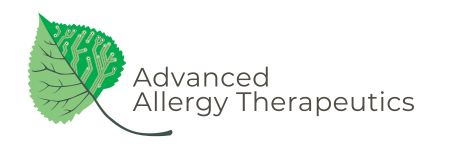AAT DIGITAL SIGNALS
AAT USES PAIN-FREE SIGNALS
To achieve the best results with the AAT therapy, a wide range of substances are required. It’s important to note that any substance or even a component within a substance can cause an inappropriate reaction. Furthermore, since each individual’s reaction to a particular substance may differ, even within the same item, AAT requires an extensive database of substances. Given that some of the substances needed for treatment are impossible to obtain in physical form, a signaling system becomes essential.
In the early days of development, many physical samples of allergens and various substances were required to perform the AAT therapy. These physical samples were brought into contact with the patient’s skin for evaluation and treatment. However, this method became problematic as the use of actual samples was limited due to the following issues:
- The numerous types and vast numbers of substances and stimuli that can provoke an inappropriate reaction is far greater than is commonly known.
- When treating the actual substance, there is no way to break down, test and treat the components within the substance, which is essential.
- Many substances were simply not available as samples. A few of the examples include the wavelength of sunlight, barometric pressure, and stimuli that cause motion sickness through movement.
- Our bodies can react erroneously to substances produced within the body, making the substances difficult to obtain. The body may perceive certain components of the stimulus as threats. For example, if eating chocolate gives you a headache, you may be reacting to caffeine, cocoa butter, phenols or a protein molecule in chocolate. These components are essential in the treatment’s success and must be isolated and addressed. Many components are often impossible to obtain as a physical sample.
These circumstances necessitated the development of a digital signaling system capable of simulating different substances required for treatment. The AAT system’s digital signal is transmitted from a dedicated treatment cuff that can be conveniently placed anywhere on the body’s surface, replacing the contact with the actual stimulus. The AAT digital signal simply mimics the actual substance so as not to adversely affect the body in any way or cause any symptoms upon exposure. The digital representations have no therapeutic value or effect on the body, but allow for a vastly greater treatment capability.

At its core, the AAT treatments are all about precision. By using the digital signals, we are able to pinpoint the specific triggers that can cause inappropriate reactions. This is made possible through the careful organization of the AAT signals into different groups, families, components, and subcomponents. By doing so, any AAT practitioner can quickly and easily identify which substances or components within a substance are causing an inappropriate reaction.
AAT utilizes a proprietary digital signaling system that currently represents more than 65,000 substances, making treatment options highly specific and tailored to each individual’s needs. The digital representations are used in place of the actual substances during testing and treatment, offering a safe, effective, and non-reactive exposure method for allergy sufferers.
AAT regularly expands the database, constantly increasing the number of substances available for testing and treatment. Practitioners around the world also continue to provide new substances based on their own clinical experience and research, contributing greatly to the expansion of the database library on a regular basis. So, by utilizing digital signals we can offer an unlimited number of items for treatment purposes.
What is AAT
The AAT Method
AAT - An Integrative Medicine
AAT Expert System
AAT Assessment Method
AAT Digital Signals
What is an Allergy
Allergies vs Sensitivities
Adapting to Our Modern World
FAQ
